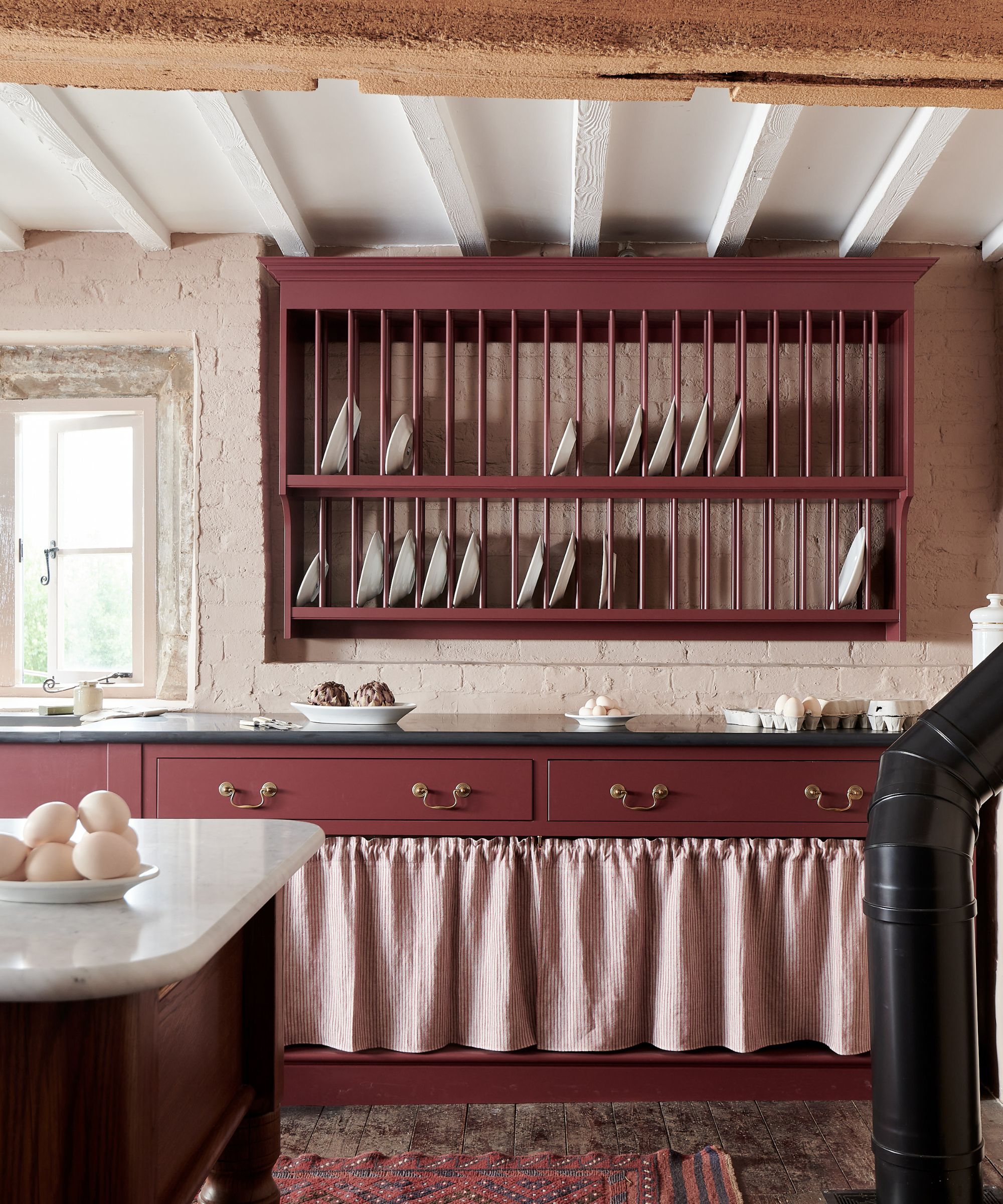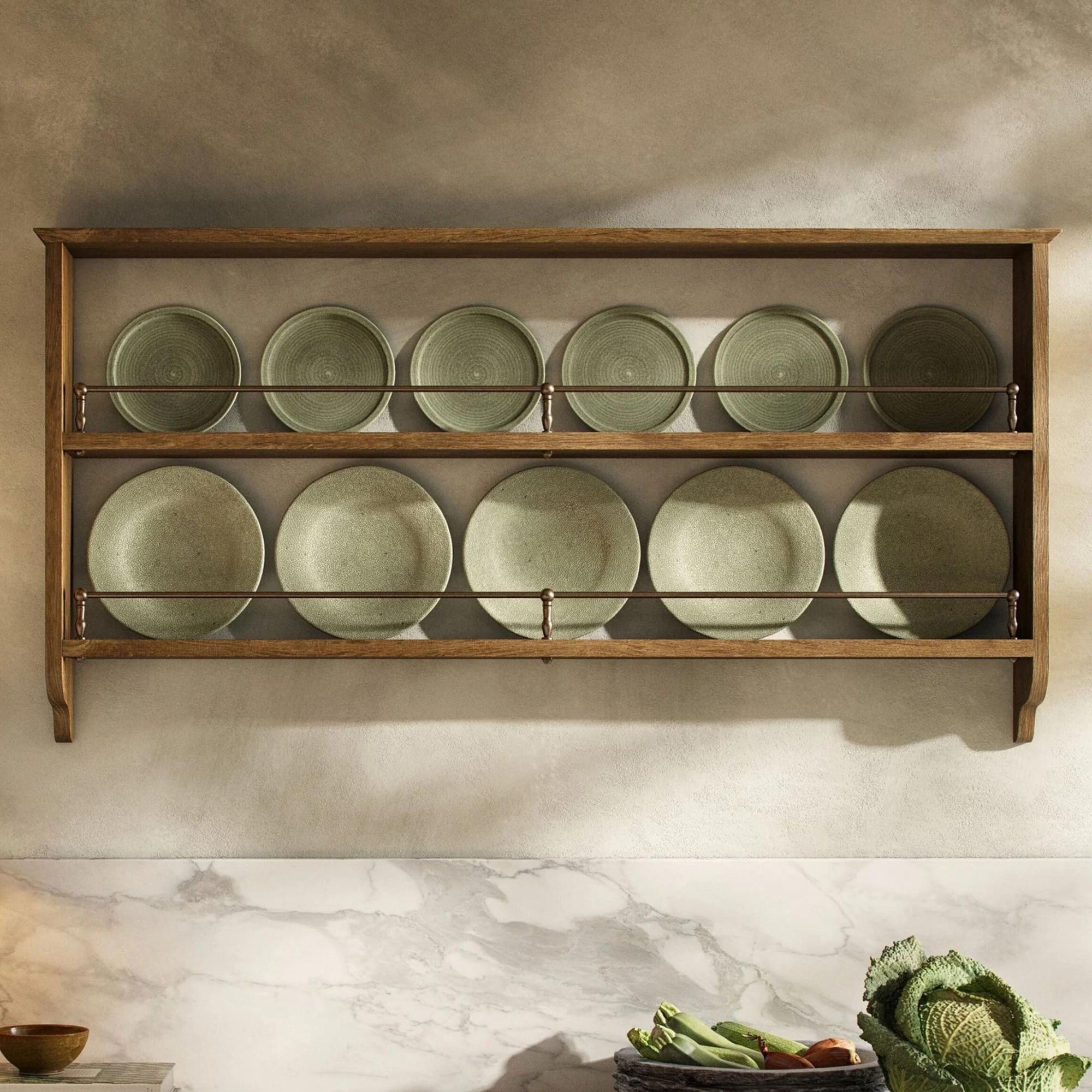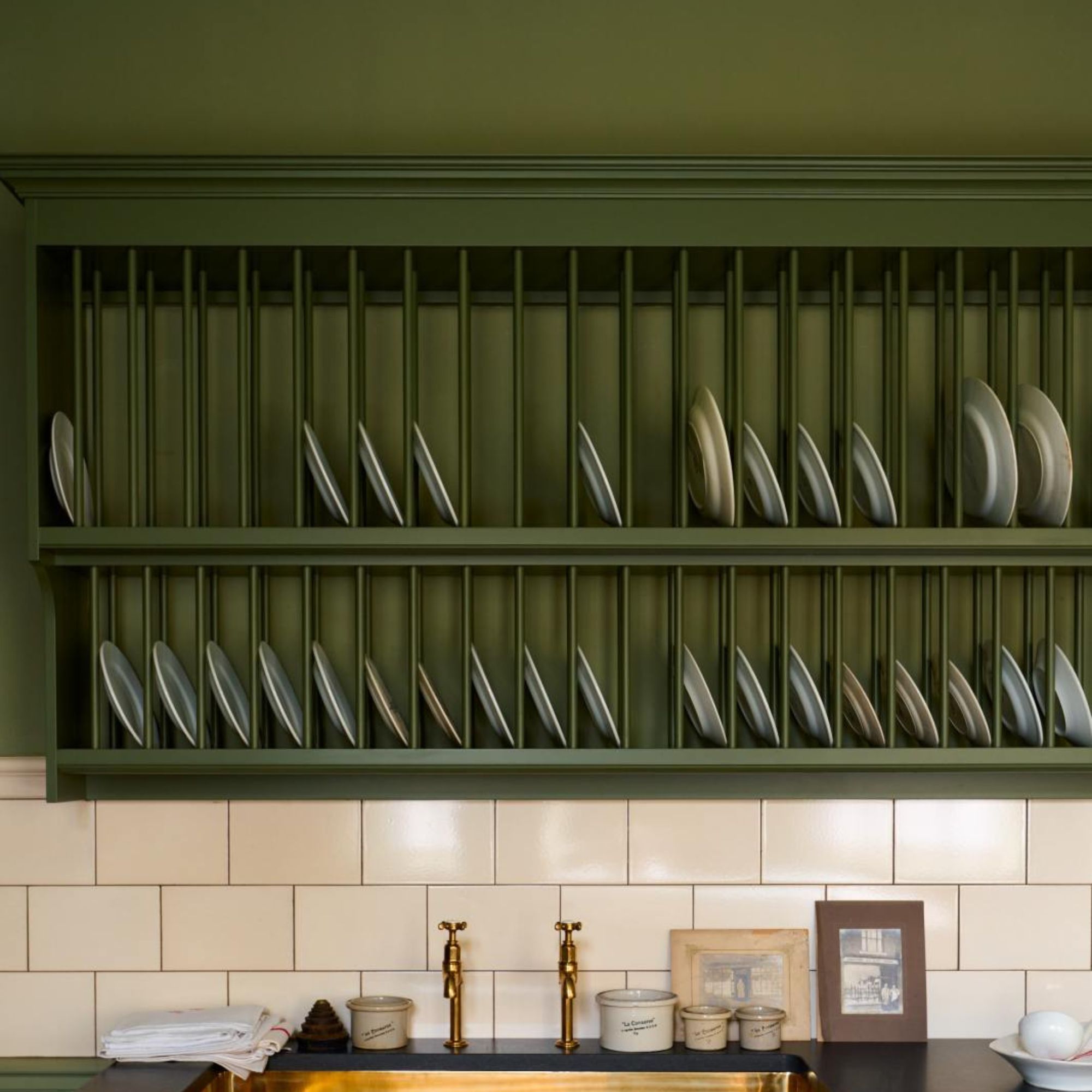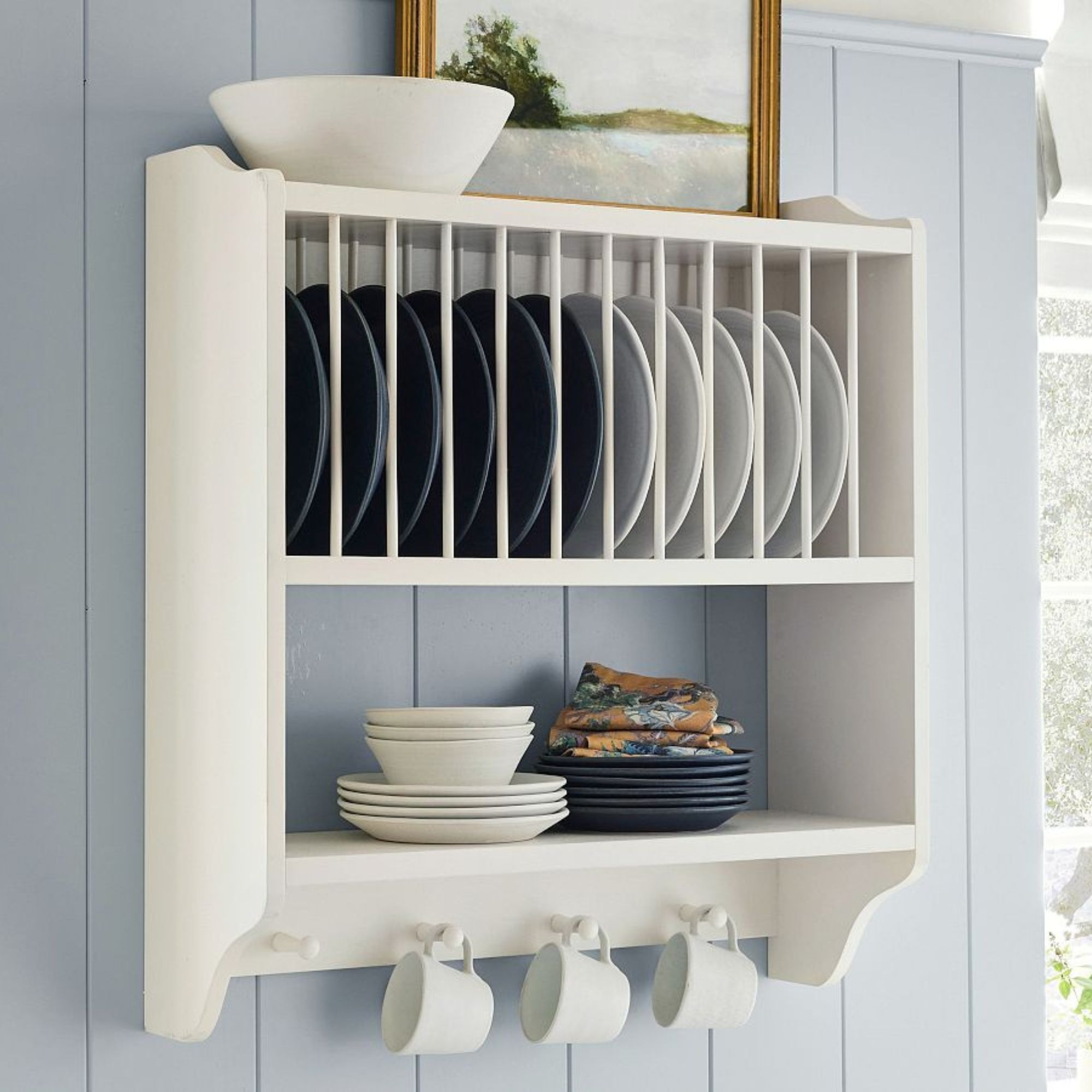Drew Barrymore's plate storage is a unique take on open shelving – they 'make the kitchen feel more welcoming and lived in'
Evoking a modern farmhouse or cottage-style kitchen, Barrymore's plate rack is a strategic and aesthetically pleasing way to store dishes


We are a big fan of an open shelving unit here at H&G, but when we saw Drew Barrymore's take on the trend, it made us reconsider the ever-popular plate rack.
A staple in farmhouse-style kitchens, plate racks are both aesthetically pleasing and highly accessible storage methods, and this is the case for the Drew Barrymore Show host's own unit.
In a clip recently shared to her Instagram page, we can see that the actor has installed a simple, wooden unit above her sink, with some cream plates acting as decor. We love the look, so we got insight from an expert to find out whether plate racks are a worthwhile investment in the kitchen.
A post shared by Drew Barrymore (@drewbarrymore)
A photo posted by on
We know that one of the draws of open shelving is that we are able to see all our belongings out in the open, and this stands true for a plate rack.
'The visual charm of plate racks lies in their ability to turn everyday essentials into a display of craftsmanship and beauty,' explains Westchester-based designer Nina Lichtenstein. 'Unlike cabinets that hide plates behind closed doors, plate racks allow you to showcase your favorite dishware. Whether you have a collection of vintage china, colorful ceramics, or minimalist stoneware, the open display adds texture and personality to your kitchen.'
She continues, 'In the farmhouse, country, or cottage-style kitchens, plate racks naturally evoke a nostalgic, homely feel, often making the kitchen feel more welcoming and lived-in. For more modern or transitional spaces, they can be streamlined and sleek, offering an opportunity to mix in contemporary design elements. Plate racks bridge the gap between function and decoration, allowing you to elevate your dishware as part of the room’s overall aesthetic. They can also provide subtle pops of color when using vibrant plates or create contrast with textured white or neutral dishes.'

Rather than stacking plates atop one another, Lichtenstein explains that plate racks have the benefit of providing each plate with an individual storage unit, as well as freeing up counter space to maximize storage.
Design expertise in your inbox – from inspiring decorating ideas and beautiful celebrity homes to practical gardening advice and shopping round-ups.
'From a practical standpoint, plate racks are ideal for keeping dishes easily accessible,' she explains. 'Unlike traditional stacked storage in cabinets, plate racks allow for each plate to have its own slot, making it much easier to grab the dish you need without disturbing an entire pile. This type of open storage is especially beneficial for everyday plates, frequently used serving dishes, or decorative plates. Another advantage of plate racks is their space-saving design. Wall-mounted racks free up precious countertop or cupboard space, making them ideal for smaller kitchens. If you're working with a larger space, incorporating plate racks into your cabinetry helps keep everything organized while also breaking up the monotony of closed storage.'
However, plate racks include some considerations; mainly, how to organize plates safely and securely when they are being stored openly.
'Whether built-in or freestanding, your plate rack should be sturdy enough to support the weight of your plates,' Lichtenstein states. 'For heavier materials like stoneware or porcelain, consider racks with stronger, thicker bars.'
Additionally, she recommends ensuring that plates are not too big or small for rack slots.
'The slots or dividers in the plate rack should be sized appropriately for your plates,' she says. 'Plates should fit snugly but not be wedged in too tightly, which could lead to breakage. Look for racks with non-slip material on the base to help keep the plates in place.'
Shop H&G's Plate Rack Edit

You can't go wrong with a rustic plate rack, and this wood one does the trick.

Add some color to your kitchen with this stunning green plate rack.

A farmhouse kitchen essential, this white plate rack also features a convenient shelf for additional storage.
In addition to the above tips ,we recommend ensuring that plate racks are not overcrowded. Leave room between plates to avoid any chipping or clinking.

Hannah is Homes & Gardens’ News Editor, with a focus on celebrity style and entertainment content. She got her start in media as a digital editorial assistant at ELLE Canada, and has since written about lifestyle and culture for publications such as Nylon and i-D.
Her love of film is rivaled only by one with a great soundtrack, and she hopes to someday decorate a Nancy Meyers-worthy kitchen.